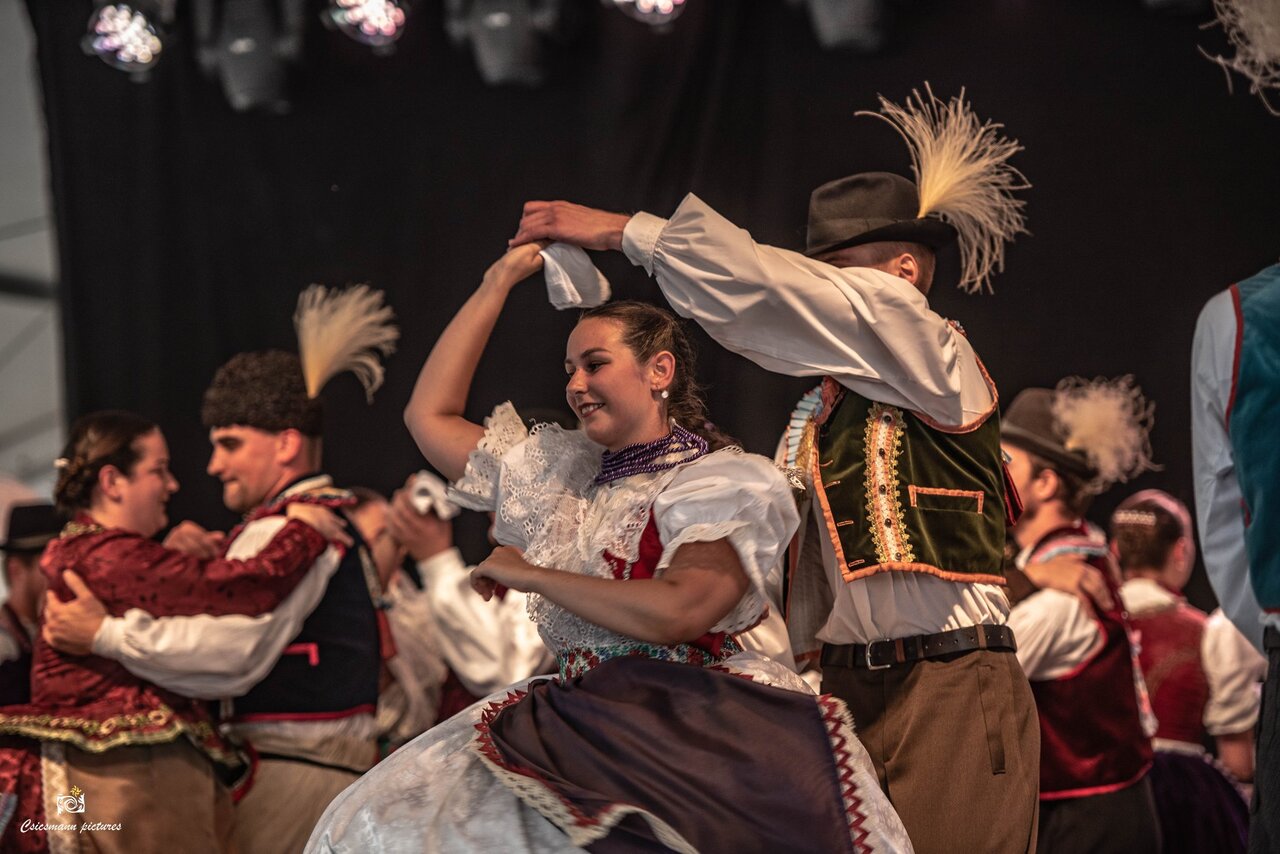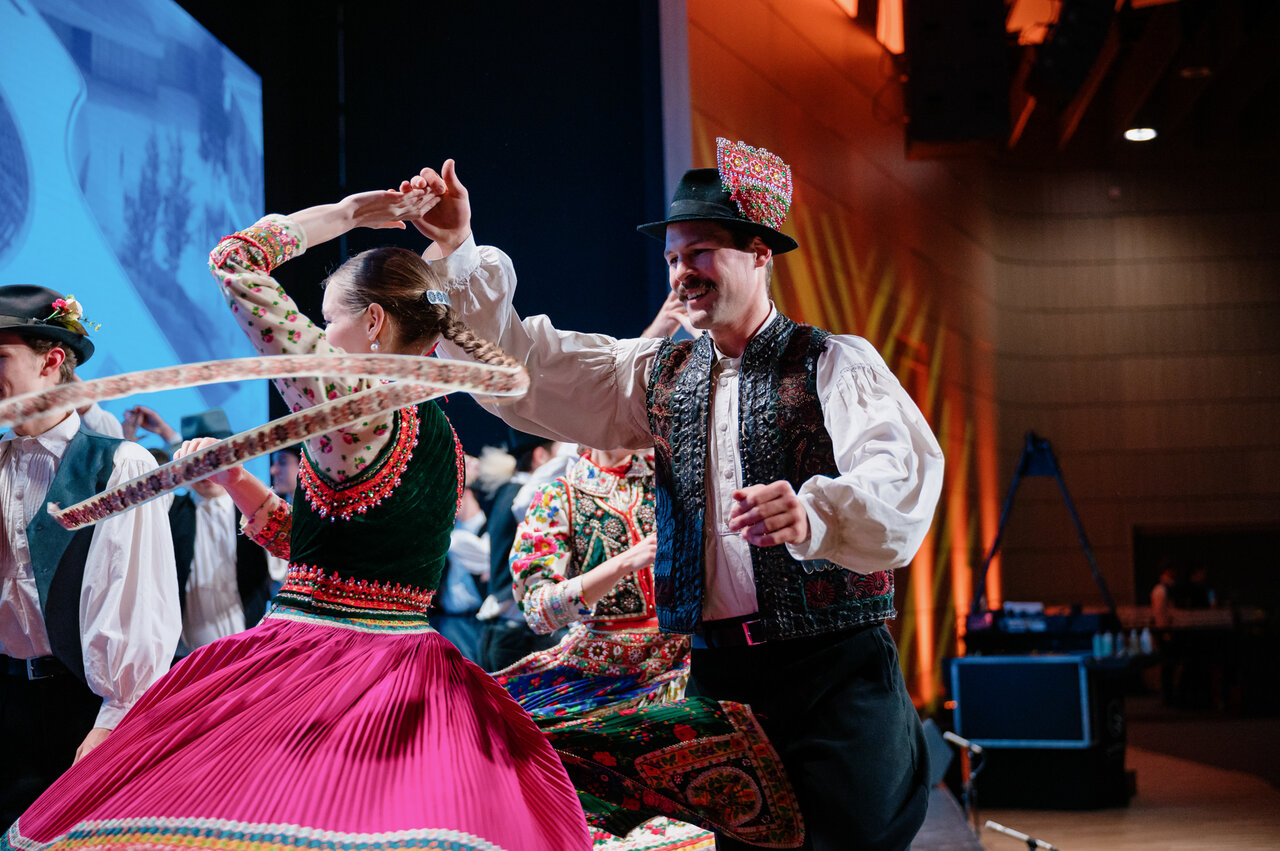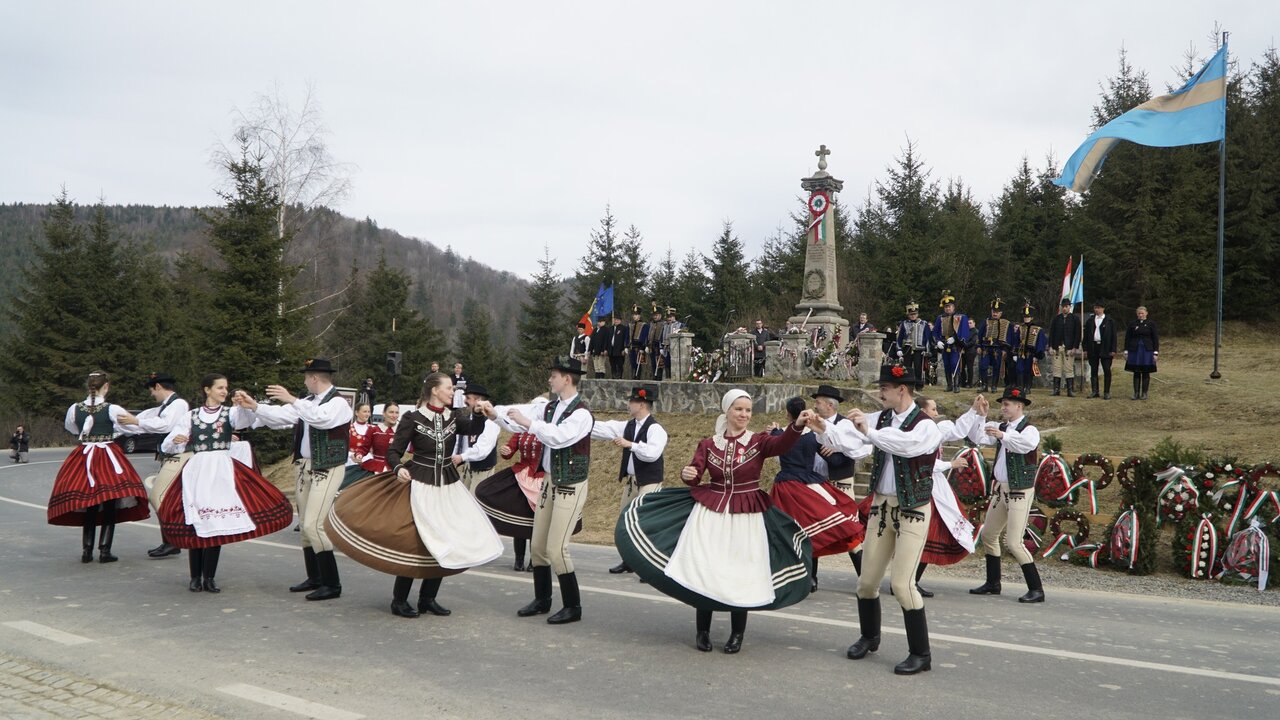Discover the magnificent and colourful Hungarian folk costumes! – PHOTOS

The history of Hungarian folk costumes and dress traditions go back centuries. Folk costumes are not only important part of the Hungarians’ history but also symbolise the Hungarian traditions.
Traditional Hungarian folk costumes
Men’s clothing was predominantly characterised by decorated shirts, brimmed hats and trousers tucked into leather boots, writes magyarorszagom.hu. Men also wore vests, jackets and – in colder times – fur coats. Traditional Hungarian women’s clothing is spectacularly decorated aprons or waistcoats pulled over a white shirt. White, densely decorated, colorful skirts were also common among women, as were equally ornate headscarves.
The basic elements of the Hungarian national costume can be considered to be the simple and in most cases home-made pieces of clothing. These include shirts made of linen, trousers, skirts, aprons, belts, cowhides, leather vests, ect.

Folk Dance. Photo: Facebook/Kapuvár Néptáncegyüttes
Folk costumes of the Great Hungarian Plain
The old costumes of Debrecen, Nagykőrös, Kecskemét, as well as the Jászkun and Hajdú regions belong to this type of folk costumes. Since animal breeding was one of the main crafts of the Hungarians, the basis of many men’s clothing was the everyday wear of simple shepherds or other trades dealing with farm animals. The clothes consisted of shirts, trousers, waistcoat, brimmed hats, boots and, in colder weather, some kind of outerwear (such as fur coats). Shirts and trousers were usually loose fitting and made of white linen, while white shirts and trousers were often decorated with embroidered motifs. On their heads, the men wore felt hats with a high folded back brim, also with fur, writes mek.oszk.hu.
- Read also: Was Hungary’s greatest king Romanian?

Costumes from across the Danube
In many regions of Transdanubia, clothing was colourless and relatively featureless. In return for their wages, the manor bought the simple pieces of clothing for the servants of the manorial majorities. In addition, however, Transdanubia can be found in an almost extreme form of new-style colorful peasant clothing and long-preserved old-style archaic costumes. Vests were at first very short and did not even fully cover the waist. However, their longer versions became widespread from the middle of the 20th century. Hungarians wore linen pants as everyday wear, and they wore wider versions for festive occasions. The trousers were also embroidered, and the bottom of their legs were decorated with frills.

Transylvanian Hungarian folk clothing
One of the most important characteristics of the Transylvanian folk costumes is that the western influence did not really reach this far, so quite unique designs could develop here. The men’s shirt was surrounded by a wide belt made of leather, called a thimble or follicle. Furthermore, the original Transylvanian shirts were loose and had neither collars nor cuffs. Men made tight trousers from home-made fabrics, and later from factory materials. Interestingly, Transylvanian Hungarians divided their clothes based on colour. The young women working in the fields in bright red skirts separated from the older ones in dark skirts. As for men, their shirts of the younger ones were tied together in red, and of the older in black.

Source: magyarorszagom.hu, mek.oszk.hu






